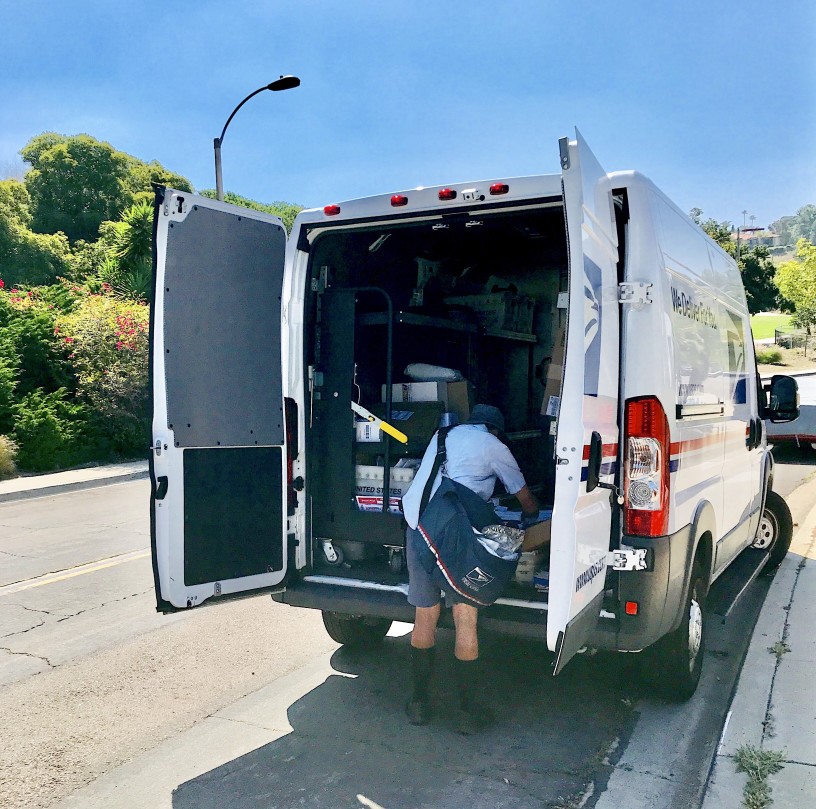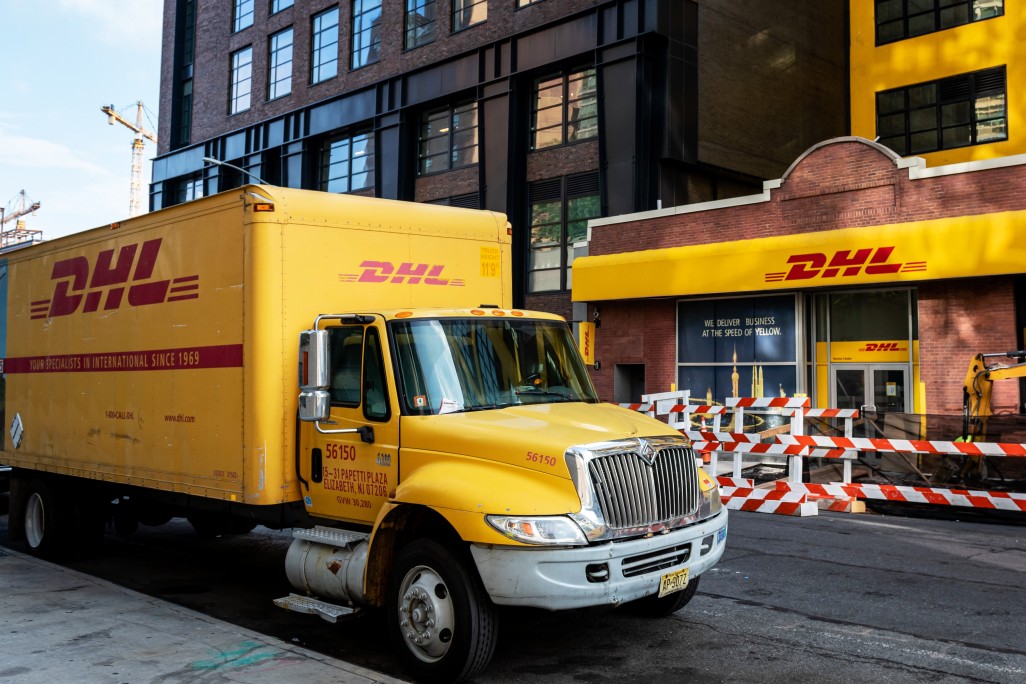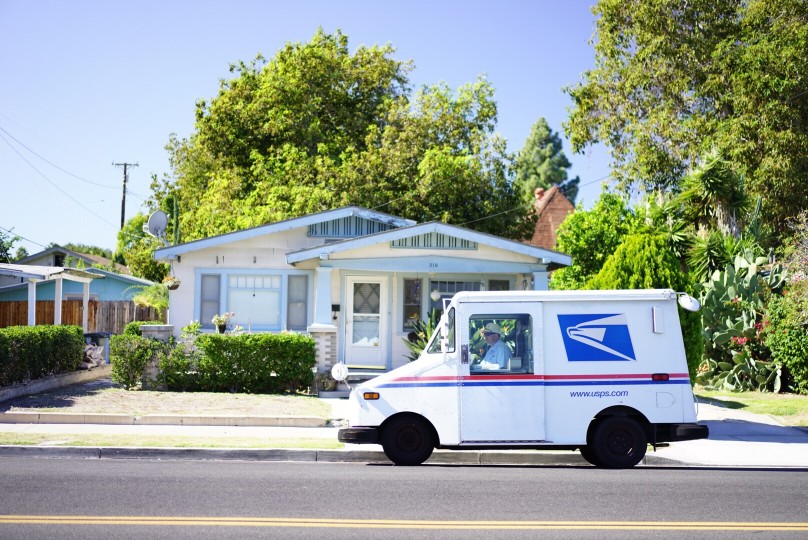Have you ever wondered what the differences are between a mail carrier and a courier? These two terms are often used interchangeably, but that can cause confusion, especially if you are trying to distinguish between Post Office couriers and the couriers of other companies. A post office courier is the same as a postal carrier, although the term “carrier” is more often used. Both terms refer to the worker who transports the mail from the depot to your front door. Generally, the term “courier” is used for services that are commercially run, rather than nationally run (such as USPS). However, some people do use the word “courier” for both, and not just the employees of private delivery companies.

What Does The Term “Courier” Usually Mean?
The term “courier” is usually used to refer to a private company that delivers mail, rather than USPS, the national mail delivery company. Some examples of courier companies include UPS, FedEx, DHL, and DPD. These companies deliver mail to residential or commercial addresses, both across the USA and the rest of the globe. They almost always handle packages rather than letters, and usually offer services such as overnight delivery, tracking, and “signed for” postage. On the whole, couriers offer more economical rates when you want to send a large package.
USPS is a similar service, but it is a national organization and has a network that delivers mail across the USA six days a week. The vast majority of mail is delivered via USPS, and it handles almost all letters and smaller pieces of mail, such as postcards. USPS delivers to most residential addresses every day (except Sundays), regardless of how far-flung the address is. The company is therefore able to offer cheap, fast services for small items. Few of the private courier services are used to send letters, and they tend to specialize in packages. Although it tends to be cheaper to send a package with a commercial courier than with USPS, it is not the cheaper way to send letters. While USPS will make frequent deliveries, potentially delivering almost daily to each property, couriers usually deliver far less often.

Why Are USPS Workers Called “Carriers”?
The workers that deliver mail for USPS tend to be called mail carriers, although there are other names for them, including “mailman,” “letter carrier,” or “postal carrier.” The term “mail carrier” is intended to reflect that the job is gender-neutral and can be performed by men or women. It is a direct replacement for the term “mailman,” which was common in the past. A lot of people still use the term “mailman” because it is easier and has fewer syllables, but there is a push to get “mail carrier” normalized in society, leveling the playing field for women that work in mail delivery and acknowledging their contributions.
In the USA, there are three kinds of mail carriers: Highway Contract Route Carriers, Rural Carriers, and City Letter Carriers.
Highway Contract Route Carriers are contracted independently, and contracts are awarded to the lowest bidder. This bidder then handles the mail on that particular route for the amount of time dictated by the contract.
Rural Carriers, unsurprisingly, handle the mail for rural areas, and these employees tend to be salaried based on their “evaluated hours.” Once or twice per month, the volume of mail they handle gets counted, and this is used to set the amount that they are paid per day until the next evaluation.
City Letter Carriers are paid by the hour, and can be paid overtime. They will usually complete eight hours of deliveries per day, and routes can be adjusted to maximize the efficiency of the workforce overall, ensuring that the workload is well distributed and overtime is minimized.
The term “carrier” is the one used by the postal service, rather than “courier.” Despite that, many people are starting to use the two terms interchangeably. This may be because “courier” is more clearly related to mail than “carrier,” and it’s more succinct and free from gender connotations than “mailman.”
How Do Couriers Differ From USPS?
Let’s explore some of the major differences between the standard, recognized couriers and USPS, because there are quite a few things that separate these two otherwise similar services.
Difference One: Speed
There is no guarantee that a courier will ship faster than USPS will if you haven’t paid for this service, but as a rule of thumb, couriers tend to offer quicker and more economical shipping options than the national service. You can pay for overnight delivery with most of the couriers and with USPS if you choose to, but you will usually pay USPS more for the same service, and it isn’t what USPS is geared toward providing. USPS handles vast volumes of mail every day, and that can make speed challenging and expensive to provide.
Couriers, by comparison, handle far less mail, and they can therefore process and deliver it more quickly, because they are providing a tailored service. The courier who brings your mail hasn’t delivered to every other house on your street and ten streets before it; they have a specific route to bring mail to your door and a few other select doors. This increases the speed that they can offer without significantly increasing the price, because the service is much more individualized. It also means that couriers can more accurately predict delivery times and offer delivery windows, because they are making comparatively few deliveries. While USPS may offer some guarantee about the delivery time if you pay their top prices, this is not what the service specializes in, and a courier will often prove preferable if the delivery slot is important to you.
Difference Two: Tracking
Again, handling less mail allows couriers to provide their clients with more accurate tracking information. The courier might have twenty pieces of mail to handle, rather than two hundred, and this means that it is feasible for them to scan your package at every step of the journey it takes, which then allows them to offer up-to-date tracking. USPS’s tracking service tends to be more generic, reflecting the vastness of its workload. In general, USPS will offer you an estimate on the arrival date, and possibly information about where the package is, whereas many couriers offer real-time tracking and more regular updates. Furthermore, if you are shipping an item internationally, many couriers will include tracking as a standard, whereas USPS requires you to add this on as a feature when you purchase your shipping label.
Difference Three: Some Couriers Offer Packing Services
Most people pack their own parcels and this works fine in the majority of cases. However, if you are short on time or you’re shipping something particularly delicate or awkward, you might want to pass the job to an expert. It’s better for both the sender and the shipping company if items are packed well enough to avoid damage during transit, as this saves expense and frustration on both sides. However, USPS expects customers to pack their own mail and take responsibility for protecting fragile items.
Most couriers expect the same, but many do offer a packing service for an extra fee. This means that the people who have the most experience of shipping items are also the ones that pack them. The courier company knows exactly how much padding and protection an item should need. This can make the packing service a great choice if you need to send a fragile item, especially if it is going abroad.
Difference Four: Flexible Sizes
Again, because it handles so much mail, USPS has quite tight restrictions about what it will send for what price, and tends to handle smaller and lighter packages. This is necessitated by the volume that it deals with, but it means that couriers are more attractive if you are sending large or heavy items. You will often find that items over a certain weight and size are prohibitively expensive to ship with USPS, but a courier will carry them far more economically. This is simply because of the logistics of the way the services are run.
A USPS employee will only have a certain amount of space in the vehicle, and can also only deal with so much weight of packages per day, because they are delivering to a far greater number of houses. Carrying large packages means that the vehicle will fill up fast, and this reduces the number of houses that the employee can deliver to. If the volume of mail to be delivered to a specific location exceeds the capacity of the vehicle, USPS will have to put another driver onto that route, which pushes up the costs.
By contrast, a courier tends to only be delivering to a handful of houses, and this makes more space in the vehicle and energy on the part of the driver for making the delivery. If you are only going to twenty houses that are more spread out, you can carry larger and heavier packages than someone who is going to fifty houses close together. Couriers will therefore generally charge less for delivering a large package than USPS will. The courier doesn’t need to save space in the vehicle to make the route economical, whereas USPS does.

How Many Couriers Are There In The US?
There are many couriers in the US, and this number is growing, partly to meet the demand of the ever-increasing e-commerce market. E-commerce requires cheap, safe, fast ways of transporting packages, and the number of courier companies has risen to meet this demand. In 2022, it is thought that there are over 250,000 couriers in the USA, and this has climbed since 2012, when there were fewer than 175,000. As more and more businesses shift to the online space and online shopping continues to be favored over brick-and-mortar shops, this trend will probably continue, and more couriers will spring up. They are providing a service that USPS is not particularly well geared to offer, because the huge volume handled by the US Postal Service does not allow for the cheap, fast shipping of packages. Couriers are therefore the favored option by many, although USPS is by no means becoming obsolete; it is just working in a slightly different area.
Does USPS Operate Internationally?
USPS is not an international business, but you can still send mail internationally using this service. The company is partnered with the Universal Postal Union, which is a United Nations agency and the primary handler of international mail for postal services everywhere. It ensures that mail is passed to the appropriate place in its destination country.
However, this does mean that your mail is being handled by multiple different organizations. This inevitably creates more scope for something to go wrong. By contrast, many large commercial couriers have a presence in multiple countries. FedEx, for example, exists in the UK, Canada, the US, and more than 220 countries and territories. This allows them to easily handle international mail, without having to outsource their service or deal with other couriers. Of course, this is not true for all couriers. A lot will have deals with local couriers in the destination country instead. This doesn’t necessarily introduce problems, but it makes the shipping process more complex and introduces more room for errors.

Conclusion
Whether you’re getting mail delivered by the Post Office or by commercial couriers, the biggest pain point in the whole process tends to be the delivery, and this may be worse when dealing with a courier, because the item is often too large or too valuable to be left in a mailbox as USPS’s mail can be. If you aren’t at home, you miss the delivery and have to spend ages trying to coordinate a re-delivery or find a safe place for the item to be left. The solution to these issues is to take out a Virtual Mailbox from US Global Mail. This will provide a secure, physical address that couriers can deliver packages to, where they will be stored until it’s convenient for you to pick them up. Whether your package is traveling via the US Postal Service or one of the other couriers, a Virtual Mailbox can make the whole thing easier.







